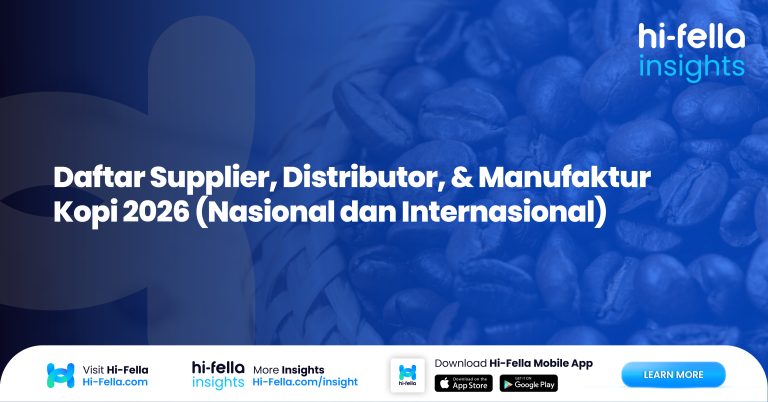The global trade landscape in 2025 is shaped by a variety of factors, not the least of which is the Federal Reserve’s monetary policy. In mid-2025, the Fed’s cautious stance, holding interest rates steady amid persistent inflation and softening growth, is a key development that ripples across global markets, affecting everything from the cost of capital to currency flows and investor risk appetite. For businesses involved in international trade, understanding the Fed’s position is crucial to navigating trade financing challenges in this shifting economic environment.
This article will break down the Federal Reserve’s current monetary stance and explore how its cautious approach impacts global trade financing. We’ll analyze the ripple effect on financing costs, specifically for emerging market exporters and importers, and examine new financing models that are emerging as alternatives to traditional trade finance tools. We’ll conclude by highlighting how businesses can leverage platforms like Hi-Fella to remain agile and maintain access to the global trade ecosystem, even in times of tightening financial conditions.
Table of Contents
Understanding the Fed’s Position in Mid-2025
As we enter the second half of 2025, the Federal Reserve’s cautious approach remains a cornerstone of U.S. monetary policy. Despite an improving labor market, inflationary pressures persist, making the Fed’s stance crucial for global financial markets.
The Fed’s Monetary Policy and Inflation Concerns
During its most recent Federal Open Market Committee (FOMC) meeting, Fed Chair Jerome Powell signaled that the central bank would keep interest rates steady for the foreseeable future. This is a response to “sticky” inflation — inflation that remains elevated despite slowing economic growth. Powell’s cautious messaging indicates that the Fed is closely watching inflationary trends while balancing the need for economic growth, making it unlikely that the Fed will aggressively raise rates in the near future.
Impact on Cost of Capital and Currency Flows
The decision to hold rates steady, combined with ongoing inflation concerns, impacts both the cost of capital and global currency flows. For international businesses, particularly those in emerging markets, this results in higher borrowing costs for USD-denominated loans. As U.S. interest rates remain elevated, it becomes more expensive for foreign borrowers to access capital. This, in turn, affects currency markets as investors may seek to shift their capital into currencies with more attractive yields, further depreciating weaker currencies and increasing financing costs.
Investor Risk Appetite
The Fed’s cautious stance also influences investor sentiment. With the uncertainty surrounding the U.S. economic recovery, risk appetite is generally lower. Investors are more selective, preferring to deploy capital in safer, more stable markets, which may not be ideal for high-risk emerging markets. This cautious outlook impacts global trade financing as investors become more hesitant to lend to countries or businesses considered riskier.
The Ripple Effect on Global Trade Financing Costs
One of the most direct consequences of the Fed’s policy is the effect it has on global trade financing. Trade financing is the lifeblood of international commerce, and any changes in interest rates can significantly impact the cost and availability of capital.
Increased Costs for Trade Finance Instruments
Trade finance tools such as letters of credit, export-import loans, and factoring are all influenced by interest rates. As the Fed holds rates steady or keeps them elevated, these financing tools become more expensive. For instance, letters of credit, which are often used to guarantee payments between buyers and sellers, are typically issued in USD. As the Fed’s monetary policy increases the cost of borrowing, issuing letters of credit becomes more expensive, which is reflected in higher transaction costs for exporters and importers.
Similarly, export-import loans that businesses use to bridge the gap between product delivery and payment become costlier. With higher borrowing costs, businesses may face tighter profit margins and increased financial pressure, especially in regions that rely heavily on USD-denominated financing.
Challenges for Emerging Markets
For businesses in emerging markets, the cost of trade finance is compounded by the added risk premiums that lenders impose due to the perceived instability of local economies. Emerging market exporters often rely on trade financing to cover the gap between production and payment, and the increased cost of borrowing can put significant strain on these businesses. As interest rates remain elevated, access to trade financing becomes more selective, especially for small- and medium-sized enterprises (SMEs) that lack the capital and creditworthiness of large multinational corporations.
Multilateral Institutions Responding to Challenges
In response to these challenges, multilateral institutions like the International Finance Corporation (IFC) and the Asian Development Bank (ADB) are stepping in to help alleviate the strain. These institutions offer programs that provide trade financing support and guarantee loans for emerging market exporters. However, their capacity to offset the high cost of capital is limited, and businesses are increasingly turning to alternative financing solutions.
Pressure Points for Emerging Market Exporters and Importers
Emerging market exporters and importers are among the most affected by the Fed’s cautious stance and the rising cost of capital. For SMEs, these pressures are even more pronounced.
Shrinking Credit Access for SMEs
Small- and medium-sized enterprises in regions like Asia, Africa, and Latin America often struggle with limited access to financing during times of global financial uncertainty. The combination of higher interest rates and more stringent lending conditions has resulted in shrinking credit access for SMEs that rely on trade financing to fuel their international business. Many of these businesses operate on thin margins and rely heavily on the availability of credit to manage cash flow and fund production.
Higher Risk Premiums and Reduced Flexibility
As borrowing costs rise, banks and financial institutions are likely to increase risk premiums, making it even harder for SMEs in emerging markets to secure financing. This reduction in financial flexibility may prevent these businesses from expanding or fulfilling orders on time, leading to missed opportunities and reduced competitiveness in global trade.
Large Corporates Mitigating Risks
Larger corporates with more robust financial structures have a degree of insulation from these pressures. These companies are able to mitigate risks through currency hedging, local-currency trade deals, and long-term contracts that lock in more favorable financing terms. They may also have access to alternative financing channels, such as bonds or syndicated loans, that are less sensitive to short-term interest rate fluctuations.
New Financing Models and Digital Innovations in the Trade Ecosystem
As traditional trade finance tools become more expensive, new financing models and digital innovations are emerging to address the changing landscape.
Blockchain-Backed Trade Finance
Blockchain technology is gaining traction as a disruptive force in trade finance. By providing a transparent and decentralized ledger for transactions, blockchain can streamline processes like letters of credit and trade documentation. This reduces reliance on traditional intermediaries and helps lower the cost of trade financing. Platforms using blockchain can offer faster, cheaper, and more secure transactions for buyers and sellers, addressing some of the challenges caused by tightening credit markets.
Decentralized Finance (DeFi) Applications
Decentralized finance (DeFi) is another innovative solution that offers alternative trade finance mechanisms outside of traditional banking systems. By leveraging smart contracts and decentralized lending protocols, DeFi allows businesses to access capital without relying on banks or other centralized institutions. This technology can be particularly beneficial for SMEs in emerging markets who may not have access to traditional trade finance channels.
AI-Powered Credit Scoring for Cross-Border Buyers
Artificial intelligence (AI) is revolutionizing the credit scoring process for cross-border buyers. Traditional credit scoring models rely heavily on historical financial data, but AI-powered solutions can incorporate a wider range of factors, such as transaction history and supply chain data, to assess creditworthiness. This innovation helps mitigate some of the risks of financing in volatile markets, offering businesses a more accurate and dynamic view of their potential borrowers.
Join Hi-Fella to Connect with Supplier and Buyer Around the World
In a time when access to financing is more selective and strategic partnerships are critical, Hi-Fella offers a platform that connects businesses with trusted buyers and suppliers from around the world. With financial uncertainty affecting traditional trade finance tools, businesses need a reliable network to facilitate trade and navigate global financial conditions.
Expand Your Network with Hi-Fella
Hi-Fella’s global network enables buyers and suppliers to connect and collaborate seamlessly, regardless of market conditions. Whether you’re looking for reliable partners to source goods or seeking new markets for your products, Hi-Fella offers a secure and efficient platform to expand your reach and enhance your business relationships.
Access Market Intelligence
Hi-Fella also provides real-time market insights, helping businesses stay informed about financing trends, exchange rate shifts, and emerging opportunities. With this information, businesses can make better decisions about when and where to invest, minimizing risks and maximizing opportunities in global trade.
The Federal Reserve’s cautious stance and its impact on global trade financing are reshaping the financial landscape for international businesses. As trade financing costs rise and credit access becomes more selective, businesses need to adopt innovative solutions and strategic partnerships to remain competitive. By leveraging platforms like Hi-Fella, businesses can navigate these challenges with confidence, connecting with trusted trade partners, accessing valuable market intelligence, and optimizing their trade financing strategies.
Join Hi-Fella today to expand your global reach, mitigate financial risks, and thrive in the evolving world of global trade financing. With Hi-Fella, you can stay ahead of the curve and secure your place in the competitive international market.








